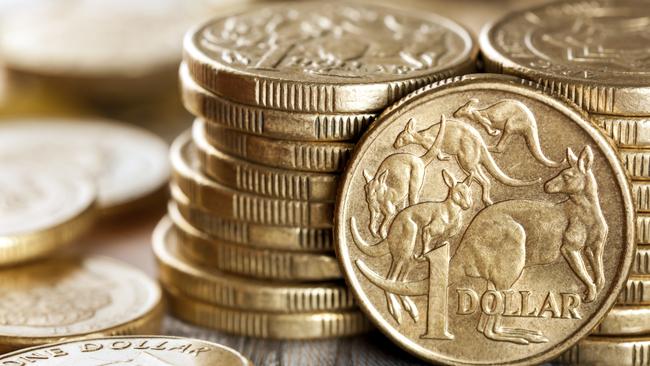Dollar jumps as GDP print eyed
The local unit was more than half a cent stronger in late trade, with GDP tipped to grow at a four-year high.

The Australian dollar jumped to its highest level in nearly two weeks in local trade on Tuesday, as forecasts indicated the economy is set to grow at its fastest pace in four years in the second quarter.
Gross domestic product data will be published at 11.30am (AEST) on Wednesday.
The currency’s gains also followed a decision by the Reserve Bank of Australia to leave interest rates unchanged at its monthly policy meeting. Economists said the central bank appears in no mood to cut rates again yet, and may be sidelined until 2017.
Having eased monetary policy at its May and August meetings, the RBA board judged that holding its policy stance unchanged at this meeting “would be consistent with sustainable growth in the economy and achieving the inflation target over time,” outgoing Governor Glenn Stevens said in his final monetary policy statement.
At 5.45pm (AEST) on Tuesday, the Australian dollar was changing hands at US76.49 cents, up from US75.83c a day earlier.
Strong data on second-quarter government spending and investment surprised forecasters on Tuesday, spurring economists to make big upward revisions to GDP forecasts.
Scott Haslem, chief economist at UBS Australia, said the economy is on track to post its strongest growth since 2012.
Government spending has boomed, Mr Haslem said. He projects growth of 3.5 per cent on year in the second quarter, an acceleration from 3.1 per cent in the first quarter.
The rebound in the economy shouldn’t alarm the RBA, which has said it sees scope to drive the economy faster as inflation is well below its target of 2 per cent to 3 per cent.
Australia can recapture the title of “miracle economy,” Mr Haslem said, using a phrase popular during the global financial crisis when major fiscal and monetary stimulus measures helped the country avoid recession — one of only a handful of major economies to do so.
The economy is set to mark 25 years of uninterrupted expansion. The last recession was in the early 1990s, when interest rates soared to nearly 20 per cent.
“Australia is zeroing in on the Netherlands for the gold medal of the longest economic expansion in the modern era,” said Craig James, chief economist at Commsec.
Macquarie Securities economist James McIntyre said he expects “astounding growth” in the second quarter, but this won’t rule out even lower interest rates next year. Inflation is low because of weak wages growth and slack in the job market, which are likely to precipitate further easing, he said.
Shane Oliver, chief economist at AMP Capital, said risks around inflation globally are to the downside, and Australia won’t escape such forces. So the RBA might still have scope for another interest rate cut.
But with growth racing, the prospect of aggressive cuts now looks less likely, Mr Oliver added.
GDP growth will also be supported by rising company profits, led by mining firms, which are enjoying a lift from commodity prices, while reaping the benefits of years of rigorous cost cutting.
Traders said that with the US Federal Reserve likely to drag its feet on raising interest rates until the end of the year, the Australian dollar should retain a base of support over the near term.
Dow Jones newswires




To join the conversation, please log in. Don't have an account? Register
Join the conversation, you are commenting as Logout